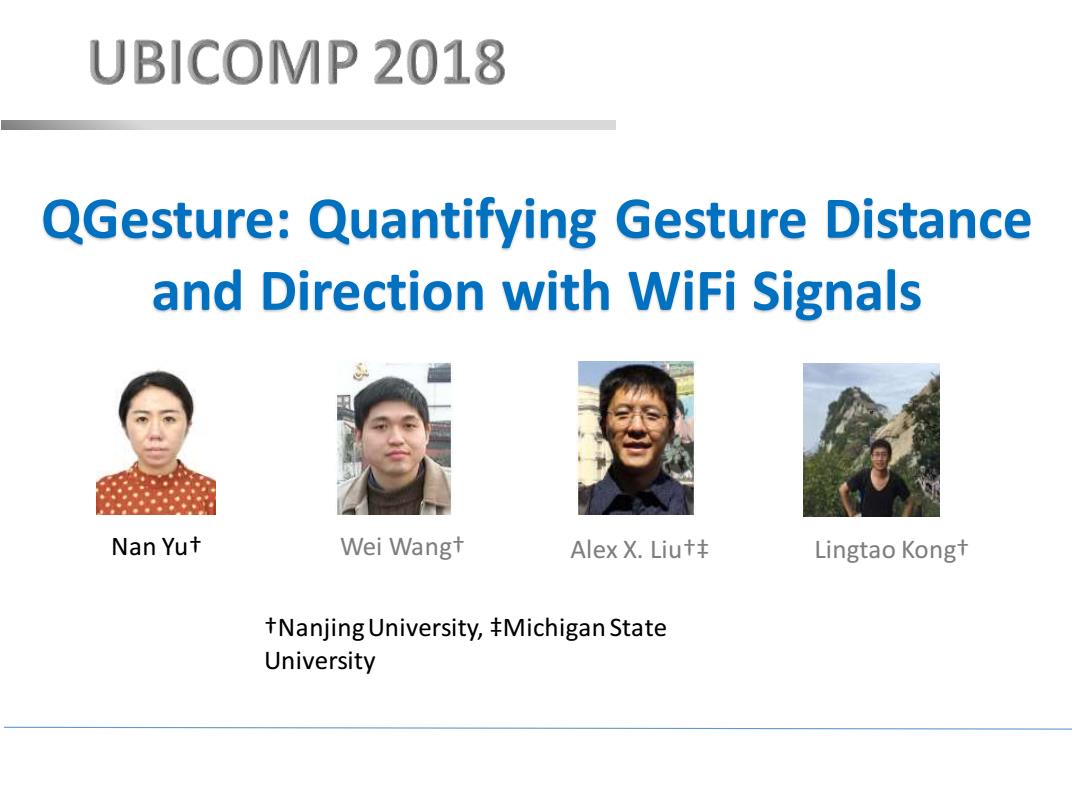
UBICOMP 2018 QGesture:Quantifying Gesture Distance and Direction with WiFi Signals Nan Yut Wei Wangt Alex X.Liut Lingtao Kongt +Nanjing University,Michigan State University
QGesture: Quantifying Gesture Distance and Direction with WiFi Signals Nan Yu† Wei Wang† Alex X. Liu†‡ †Nanjing University, ‡Michigan State University Lingtao Kong†
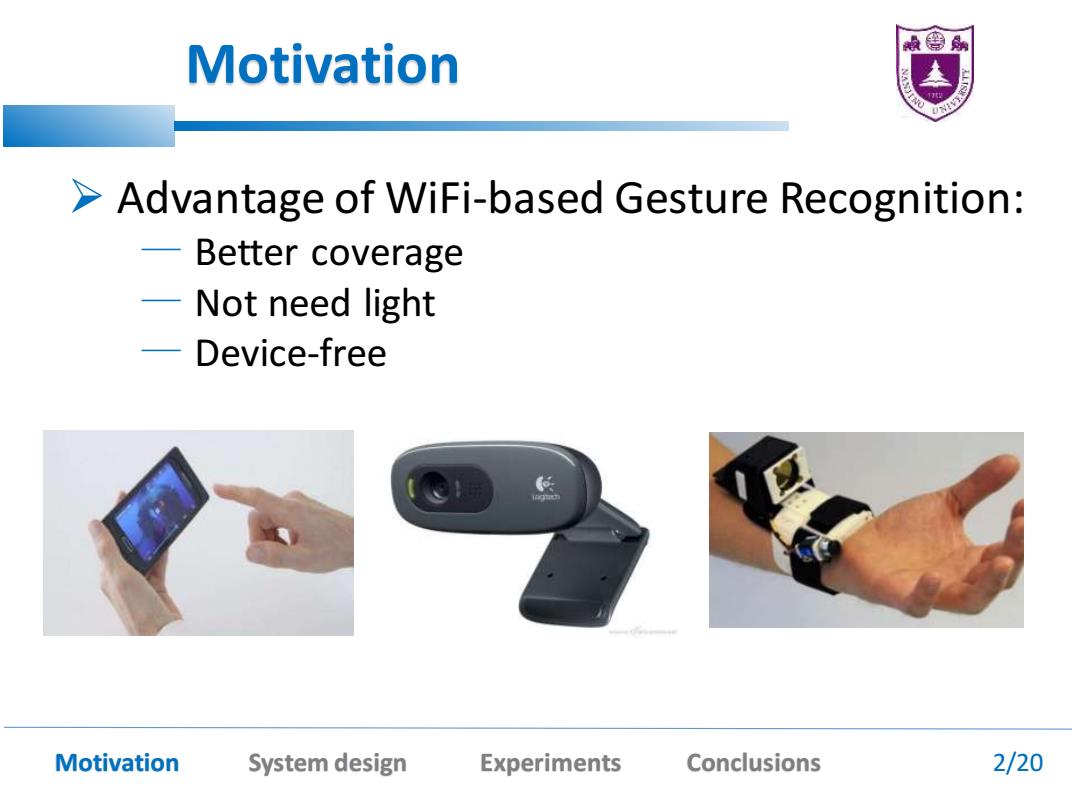
款鲁 Motivation >Advantage of WiFi-based Gesture Recognition: 一 Better coverage 一 Not need light Device-free Motivation System design Experiments Conclusions 2/20
Motivation Motivation System design Experiments Conclusions 2/20 ➢ Advantage of WiFi-based Gesture Recognition: — Better coverage — Not need light — Device-free

嫩鲁扇 Motivation It is convenient to adjust the volume using the same gesture. It is too noisy,I will decrease the volume want to increase the volume. Sender Receiver Motivation System design Experiments Conclusions 3/20
Motivation Motivation System design Experiments Conclusions 3/20 It is convenient to adjust the volume using the same gesture
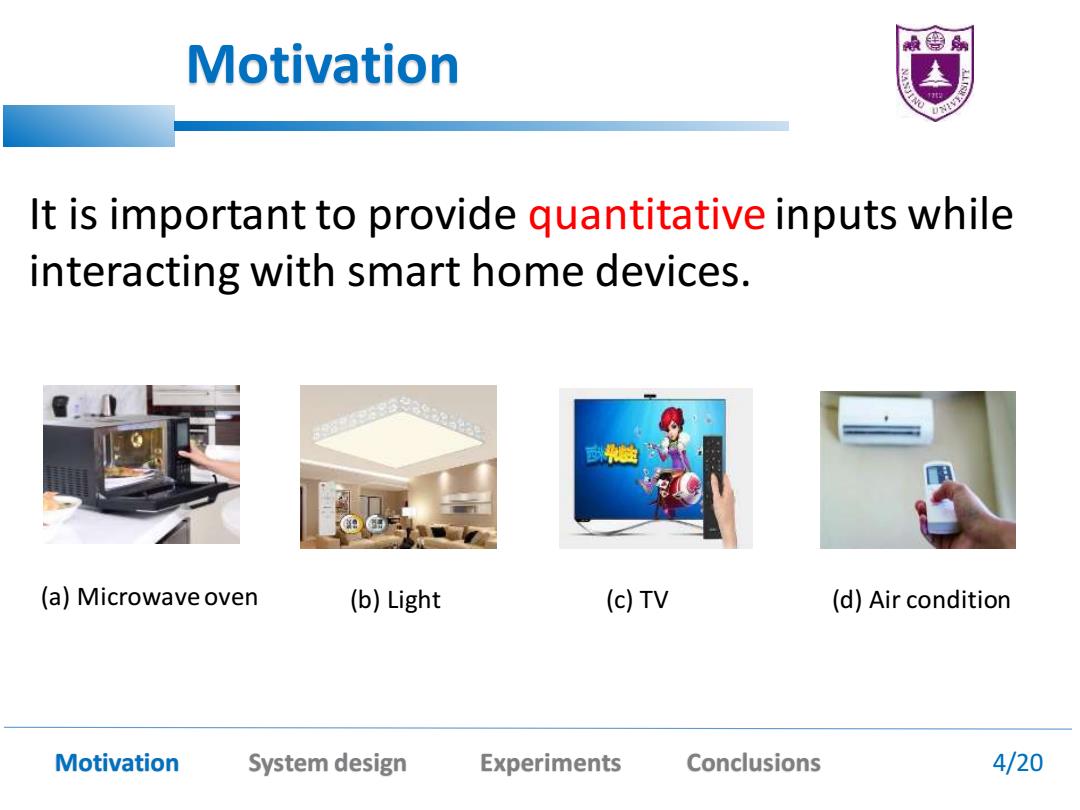
Motivation It is important to provide quantitative inputs while interacting with smart home devices. (a)Microwave oven (b)Light (c)TV (d)Air condition Motivation System design Experiments Conclusions 4/20
Motivation It is important to provide quantitative inputs while interacting with smart home devices. (a) Microwave oven (b) Light (c) TV (d) Air condition Motivation System design Experiments Conclusions 4/20
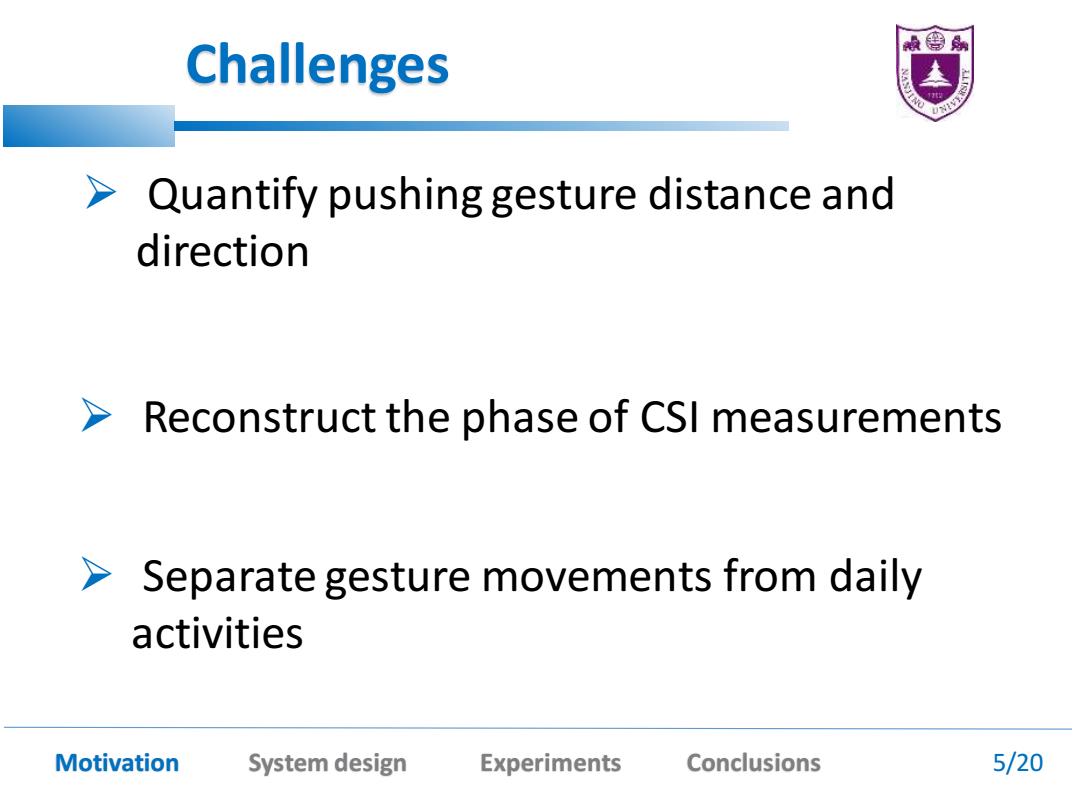
Challenges Quantify pushing gesture distance and direction Reconstruct the phase of CSl measurements Separate gesture movements from daily activities Motivation System design Experiments Conclusions 5/20
Challenges Motivation System design Experiments Conclusions 5/20 ➢ Quantify pushing gesture distance and direction ➢ Reconstruct the phase of CSI measurements ➢ Separate gesture movements from daily activities
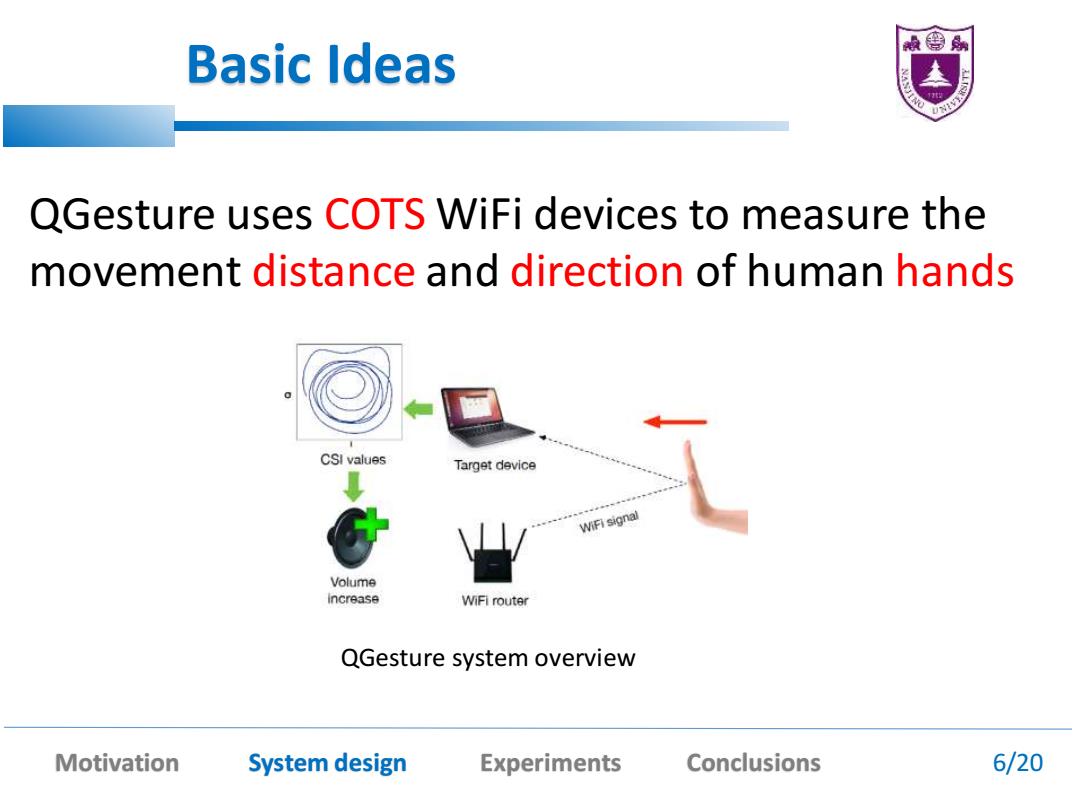
Basic Ideas QGesture uses COTS WiFi devices to measure the movement distance and direction of human hands CSI values Target device WiFi signal Volume increase WiFi router QGesture system overview Motivation System design Experiments Conclusions 6/20
Basic Ideas QGesture uses COTS WiFi devices to measure the movement distance and direction of human hands QGesture system overview Motivation System design Experiments Conclusions 6/20
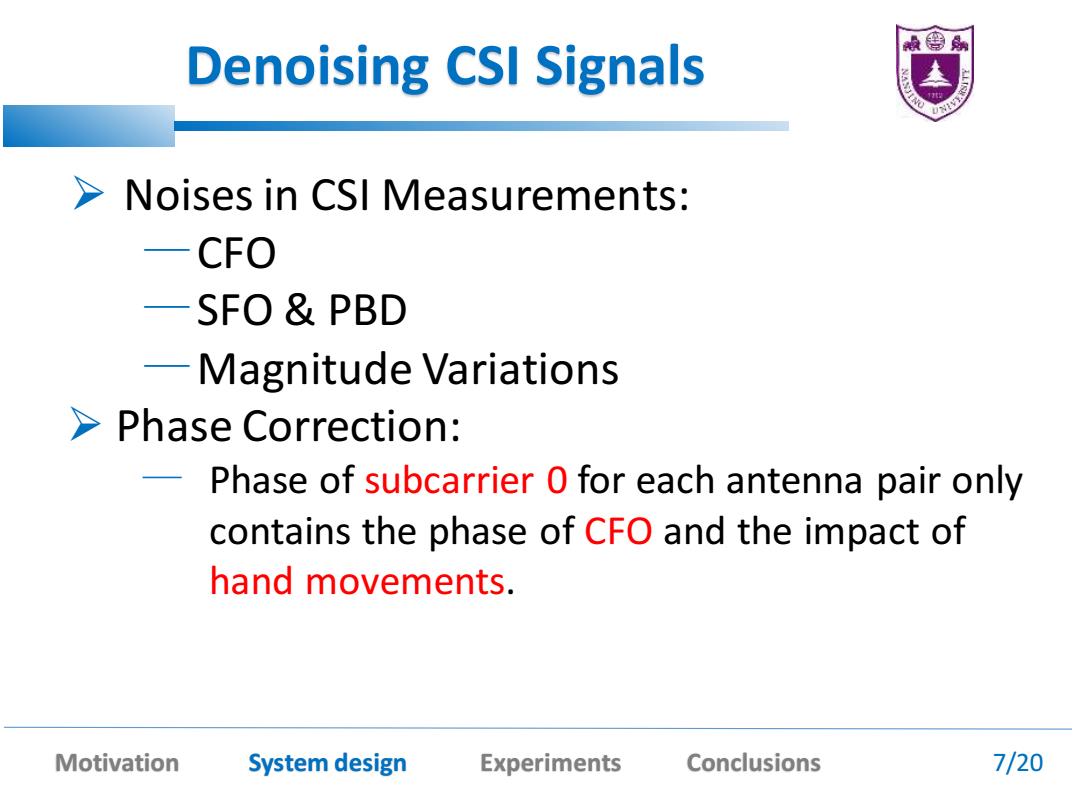
Denoising CSI Signals Noises in CSI Measurements: -CFO SFO PBD -Magnitude Variations Phase Correction: Phase of subcarrier 0 for each antenna pair only contains the phase of CFO and the impact of hand movements. Motivation System design Experiments Conclusions 7/20
Denoising CSI Signals Motivation System design Experiments Conclusions 7/20 ➢ Noises in CSI Measurements: —CFO —SFO & PBD —Magnitude Variations ➢ Phase Correction: — Phase of subcarrier 0 for each antenna pair only contains the phase of CFO and the impact of hand movements

Denoising CSI Signals Phase Correction: Obervation 1: -Magnitude of static values is more than ten times higher than that of the dynamic value 3.8 3.5 70 3 40 30 2.5 30 60 90120 150 180 30 60 90 120 150 180 Subcarrier index Subcarrier index (a)CSI time series pattern (b)Variance of different subcarriers Motivation System design Experiments Conclusions 8/20
Denoising CSI Signals Motivation System design Experiments Conclusions 8/20 ➢ Phase Correction: Obervation 1: — Magnitude of static values is more than ten times higher than that of the dynamic value (a) CSI time series pattern (b) Variance of different subcarriers
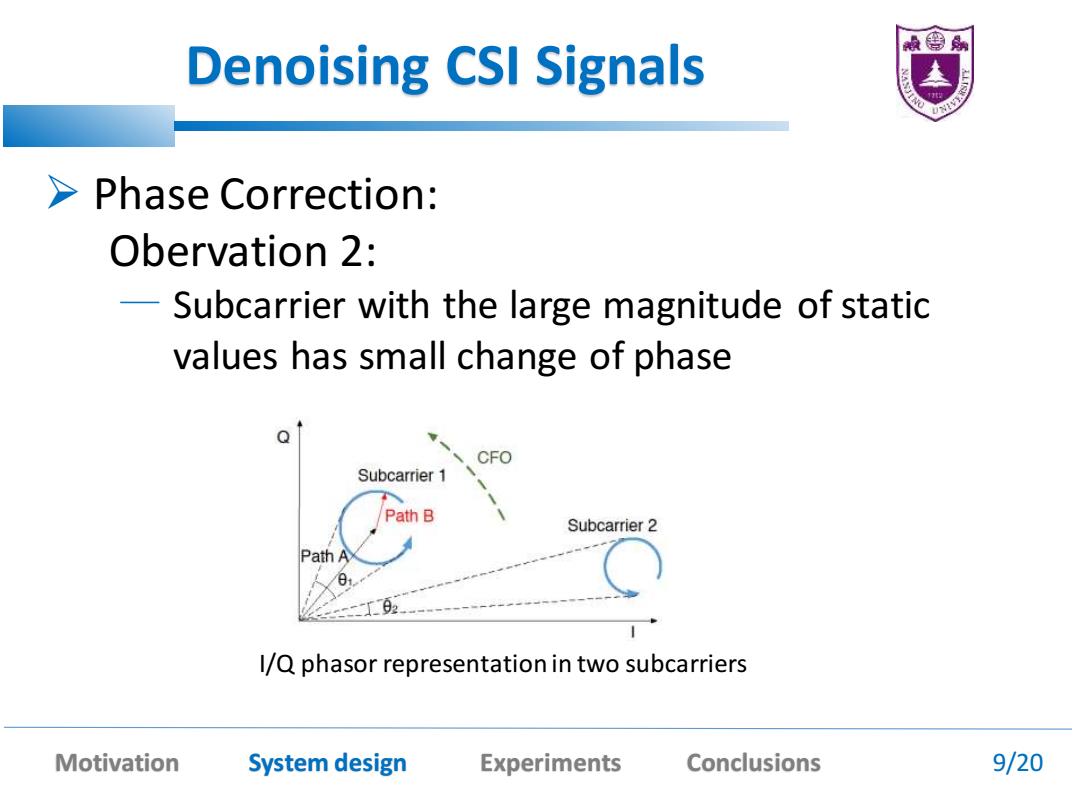
Denoising CSI Signals Phase Correction: Obervation 2: 一 Subcarrier with the large magnitude of static values has small change of phase 、cFO Subcarrier 1 Path B Subcarrier 2 Path A 92. I/Q phasor representation in two subcarriers Motivation System design Experiments Conclusions 9/20
Denoising CSI Signals Motivation System design Experiments Conclusions 9/20 ➢ Phase Correction: Obervation 2: — Subcarrier with the large magnitude of static values has small change of phase I/Q phasor representation in two subcarriers
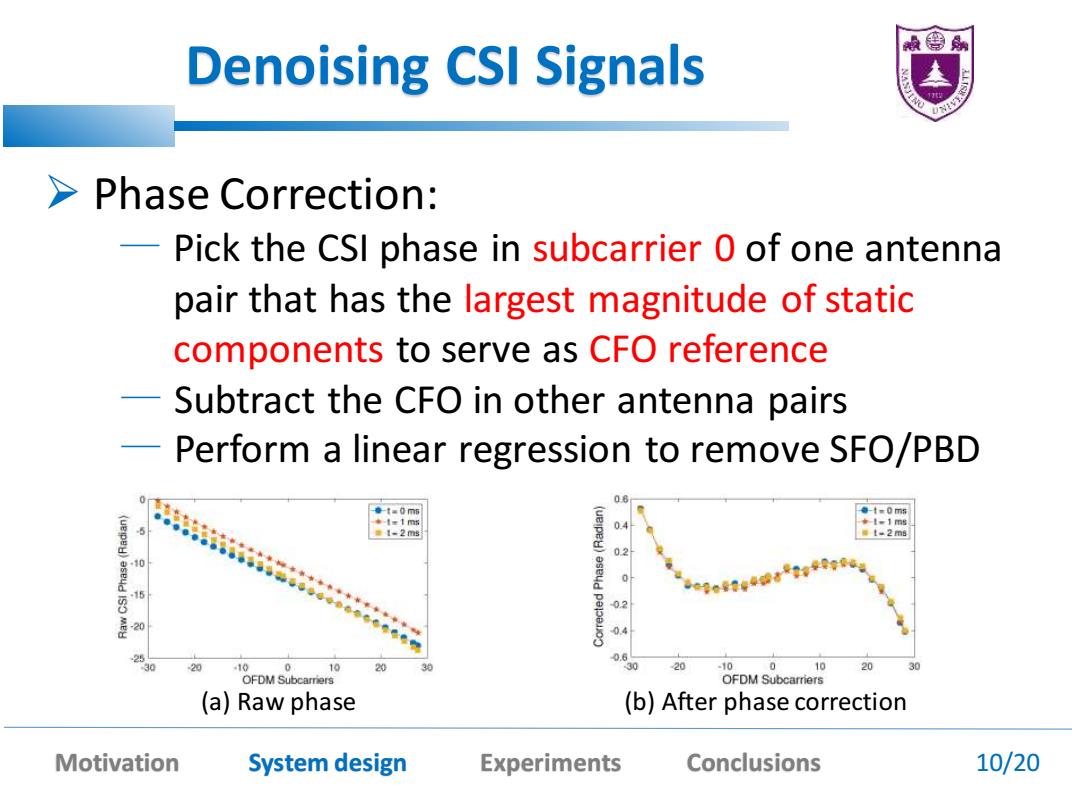
Denoising CSI Signals Phase Correction: 一 Pick the CSl phase in subcarrier 0 of one antenna pair that has the largest magnitude of static components to serve as CFO reference Subtract the CFO in other antenna pairs -Perform a linear regression to remove SFO/PBD ◆-t✉0m6 每t=0ma -1=1m 0.4 1=1m8 5 ●1=2m8 012m8 02 15 50 04 2 0. 30 20 10 0 10 20 30 30 20 .10 0 20 OFDM Subcarriers OFDM Subcarriers (a)Raw phase (b)After phase correction Motivation System design Experiments Conclusions 10/20
Denoising CSI Signals Motivation System design Experiments Conclusions 10/20 ➢ Phase Correction: — Pick the CSI phase in subcarrier 0 of one antenna pair that has the largest magnitude of static components to serve as CFO reference — Subtract the CFO in other antenna pairs — Perform a linear regression to remove SFO/PBD (a) Raw phase (b) After phase correction